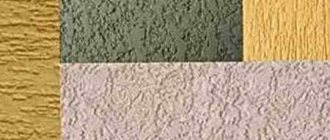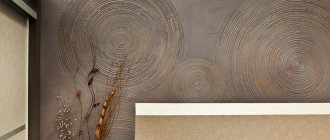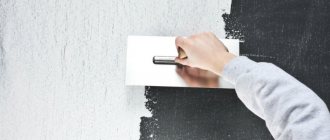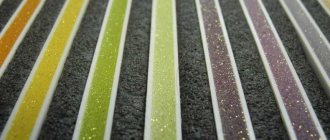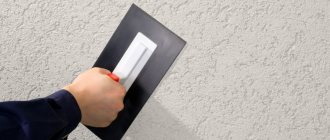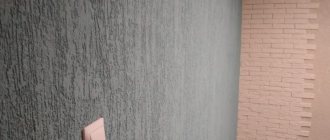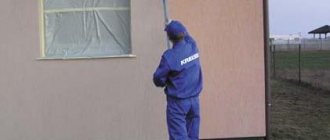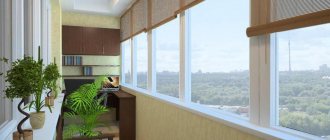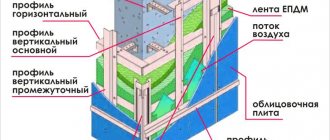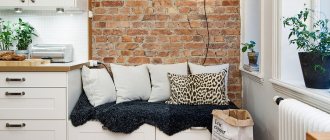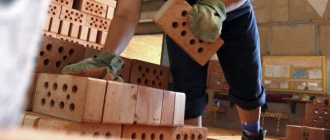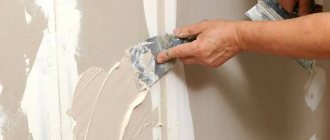Decorative plaster "Bark beetle" is often used for finishing houses and various structures. This is due not only to the decorative qualities of this type of plaster, but also to a number of other advantages that it has.
This type of plaster is quite light, does not contain substances harmful to both humans and the environment, is resistant to various temperatures and is quite durable.
Thanks to all its positive qualities, bark beetle wall covering is used for finishing various surfaces of different types of structures.
Types and benefits
The possibilities for finishing houses at this time are very large. Some of them are expensive, while others are cheaper. Therefore, when choosing which is better, drywall or plaster, you need to understand that each option has its own advantages and disadvantages, original decorative characteristics and various technical features.
For more information about the technology of applying decorative plaster “Bark beetle”, watch the video:
As for the construction of private houses, one of the most popular finishing options is “Bark Beetle”.
Plaster Bark beetle
“Bark beetle” plaster is generally divided in its composition into acrylic and gypsum plaster. The main difference between different types of plaster is the form in which they are sold.
Acrylic is sold in its ready-to-apply form . Gypsum is sold in the form of dry mixtures, which will need to be diluted during construction, making it ready for application to the wall. This link will tell you about plastering aerated concrete walls indoors.
In general, the plaster itself is a composite mixture that contains small granular stones that contribute to the formation of a special pattern, which is the most distinctive feature of this material. Find out about the proportions of cement-lime mortar for plastering walls here.
Gypsum based plaster
The granules differ in size and structure depending on the manufacturer of the plaster. For them, either small marble elements or mineral chips are used. The grain size of the material is determined by the size of the granules, which can be from 0.1 to 3.5 mm.
The plaster itself is characterized by many qualities, including a significant number of positive ones:
- ease;
- environmental friendliness;
- fire resistance;
- durability;
- tolerance to exposure to precipitation;
- resistance to mild mechanical stress;
- possibility of coloring;
- ubiquity;
- affordable price.
When choosing materials for wall decoration, their weight plays an important role. In this regard, “Bark Beetle” is suitable for most surfaces, due to the fact that instead of heavy sand, mineral fillers or polymers are used in its composition.
The components of decorative plaster do not have any adverse effects on the environment, including humans.
The temperature resistance thresholds of the “Bark Beetle” are very wide, as it can withstand severe frosts down to -55 degrees Celsius and high heat up to +60 degrees Celsius.
At the same time, the material does not fade when exposed to direct sunlight and does not emit harmful substances when exposed to fire. The “bark beetle” can be wiped and lightly cleaned using weak chemical solutions.
The main color of plaster is white, but it can be painted using various types of dyes in any other color that the owner of the building desires. This type of wall covering is sold in almost all construction stores around the country, so there are no difficulties in purchasing it.
The affordable price for a large number of people contributes to the popularity of the material and its widespread use. This article will tell you about warm plaster for interior work.
“Bark beetle” plaster: selection rules and technology for finishing the facade surface
Modern finishing of facades in the “bark beetle” style is a very good solution for decorating facades. Modern finishing of facades in the “bark beetle” style is a very good solution both for decorating the facades of public buildings and for finishing residential buildings.
This cladding has an unusual texture and a number of quality characteristics that make it possible to protect the facade of the building from adverse natural conditions. Applying the coating is quite simple. Preparation of the material and finishing with “Bark Beetle” plaster are quite accessible for independent implementation, which contributes to significant savings not only in money, but also in time for carrying out all stages of the work.
Features of the “Bark Beetle” finish
Finishing the facade of a building with “Bark Beetle” is a modern and stylish option for decorating the façade of private houses and decorating buildings. In addition to giving the building an attractive appearance, the Bark Beetle coating reliably protects the facade. The finishing material is quite affordable, and the work can be completed in the shortest possible time.
Finishing the facade of a building with “Bark Beetle” is a modern and stylish option for decorating the façade of private houses and decorating buildings
Bark beetle plaster is characterized by environmental friendliness and dries completely after application very quickly. “Bark beetle” putty looks especially advantageous and stylish on a snow-white facade.
You can prepare a solution for high-quality putty yourself in compliance with the required proportions; you can also buy a ready-made version of the mixture in bags of various sizes or ready-made “Bark Beetle” putty, which is packaged in buckets. It is recommended to select the required thickness of the plaster layer in accordance with the instructions located on the container. Under standard conditions, the layer thickness is no less than one and a half and no more than three and a half millimeters.
Possible applications
Thanks to all the qualities of the Bark Beetle, its use is practically unlimited. It can be used for both external and internal decoration of building walls. The variety of patterns allows the customer to become a designer himself, choosing the one he likes best.
The pattern depends on several factors, including:
- method of applying “Bark beetle”;
- method of subsequent grouting;
- crumb structure and size.
Application and grouting movements can be chaotic, wavy, perpendicular or directed to one side . The final result depends on this. If the workers are highly qualified, you can even use the “Bark Beetle” to create a wall drawing.
Thanks to the correct and competent use of all the properties of decorative plaster, you can achieve a seamless decorative texture and an unforgettable effect that will make a lasting impression in the future.
The most important thing when choosing a surface on which to apply decorative bark beetle plaster is the possibility of their adhesion. This is important due to the fact that the material must adhere well due to its high adhesion. Therefore, it is not worth applying “Bark Beetle” to glass or metal, since such surfaces will not be able to hold it on themselves.
Brick, concrete, stones and drywall hold plaster very well. Thanks to this, “Bark Beetle” can even be applied to ceilings.
To work with decorative or penoplex plaster, it is not necessary to have extensive experience in the construction industry. Working with it requires certain skills that can be developed with just a little training. Applying decorative bark beetle plaster with your own hands is also possible due to the ease of working with this type of wall covering.
Mixture consumption per square meter
Bark beetle plaster is applied only to a flat surface. It is the final finishing layer. The manufacturer approximately indicates how much mixture is spent per square meter on the packaging; it is about 2.5–3 kg per square meter. But these data may differ and depend on:
- The size of the gravel or marble fraction.
- Prepared surface.
- Forms of release of the mixture.
- Density of the material.
- Method of application.
Surface preparation
Due to the fact that decorative bark beetle plaster is applied in a fairly thin layer, you must first prepare the walls well so that significant flaws are not visible behind it. The surface can be leveled with sand-cement mortar before applying the Bark Beetle, but this is not a prerequisite.
If the plasterboard, concrete or brick coating is smooth, then you can only finish it with putty before applying decorative plaster.
A very good option, which is also optimal, is the technology of applying decorative bark beetle plaster to foam plastic. This method of finishing a house has two very important advantages. Firstly, the use of polystyrene foam significantly insulates the house. This material will tell you about adhesive for foam ceiling tiles.
Secondly, with its help you can level the walls much easier, since the leveling process will only involve grouting the seams between different sheets of polystyrene foam. To ensure that cracks do not occur after this, a reinforcing section is also used, which holds adjacent sheets together.
As has already been noted, “Bark Beetle” façade plaster can adhere best to certain surfaces. But they must be prepared in a special way before applying the material. The preparation process consists of priming the surface for better adhesion of the solution to it. Read about the consumption of deep penetration primer per 1m2 here.
Primer ST-16
The primer is carried out not with ordinary deep penetration primers, but with special ones containing quartz sand. One of the most popular construction companies that produce soil mixtures of this kind is Ceresit. She offers a primer called ST 16.
You can apply plaster to walls or ceilings shortly before covering them with Bark Beetle. This is due to the fact that the primer process is quite fast, and it dries within 0.5-1 hour if the air temperature is approximately 20 degrees Celsius. About 150 grams of solution are consumed per square meter.
It is necessary to select the color of the primer as close as possible to the color scheme of the plaster itself. The companies that manufacture it allow you to slightly modify the shade.
It is best to use mixtures from the same manufacturer for the sake of their better interaction with each other.
Concrete bases and cement-sand-based plaster do not always require a primer before applying Bark Beetle. They must first be moistened with plenty of water and wait until it dries.
Why insulate the facade?
Sometimes several goals can be achieved with one technique.
Placing facade insulation under plaster allows you to achieve:
- effective heat conservation inside the building, and, consequently, saving energy and heating costs, creating comfortable, gentle conditions for residents;
- remove the place of active loss and sedimentation of condensing moisture from inside the wall material beyond their limits, which protects the walls from dampness and destruction, extends the service life of the structure;
- perform decorative design of the “exterior” of the building.
dew point
In accordance with the second task, it is less rational to do plaster on insulation for internal walls than in the case of facade insulation. However, there are situations when insulation from the inside is the only option (for example, according to local legislation).
Preparation of the solution
Depending on whether the plaster base is acrylic or gypsum, its preparation before application to the wall differs significantly. Dry gypsum mixture requires dilution with water . But despite this, working with it is much easier than with acrylic.
Dry gypsum mixture
Few materials are needed to prepare the mixture for application:
- drill with a special attachment;
- container for preparing the solution;
- a small amount of water and mixture.
Due to the fact that Bark Beetle dries quickly, it must be diluted in small portions. Thanks to this, the work process will be easier. In addition, if it dries out, you will not have to throw away the prepared material, since re-dilution with water is prohibited.
The amount of plaster required for application to the surface is calculated based on the size of the crumb used in it. Taking this into account, you can create a table of bark beetle consumption per 1 square meter:
- crumb size XS – 700 grams of plaster per 1 square meter;
- XL size chips – 1700 grams of plaster per 1 square meter;
- XXL size crumb – 2000 grams of plaster per 1 square meter.
To create a solution, you must follow the instructions written on the packaging of the mixture. First, water is poured into a container, after which a certain amount of plaster mixture is added to it, which is mixed using a drill with a mixing attachment. Water is used at normal room temperature.
After stirring the mixture, give it a few minutes to soak. After this, it is mixed again and work on the wall begins.
If the bark beetle plaster needs to be given color, this must be done at the stirring stage. Dye can be added to acrylic plaster mixtures without any problems, while gypsum mixtures are easier to paint after they are applied to the wall.
Peculiarities
Among the main distinguishing features of the material is its grooved structure. The use of bark beetle is an opportunity to save money and time on finishing, speed up and make the task easier for the craftsman. The decorative pattern is obtained without a creative process; all that is required is an even distribution on the surface. Although the master will not be able to significantly influence the final result, the type of bark beetle itself and the thickness of the inclusions already guarantee a certain appearance.
The main distinguishing feature is the substance used to create the base. This is either plaster or acrylic. It is better to choose a more specific variety from the photo in the catalog in order to roughly understand how the cladding will look up close and from a distance. The mixtures necessarily contain granules to create a structural pattern and smaller fractions as a filler with a binding function. There are ready-made solutions and mixtures available for sale that are designed to add water.
It is the size of the granules that determines the parameters of the grooves on the finished surface.
Application technology
The technique of applying “Bark beetle” to the surface is quite easy and simple. It is best to do this in one go so that the joints are not visible when finishing is completed. It is very important to distribute the mixture evenly over the wall so that its individual places do not stand out.
In order to do this, often only two tools are used: a mechanical grater 30 cm long and a regular spatula 10 cm long.
The layer of bark beetle application must correspond to the size of the crumbs that are used in it. This is due to the fact that a layer that is too thick hides the texture, while a layer that is too thin loses many of its properties and is very translucent.
Decorative plaster dries within 30 minutes, which is why the work must be done fairly quickly. If it is impossible to quickly apply the “Bark Beetle” to the wall, it is necessary to insulate the belt with masking tape.
The next layer of plaster needs to be lightly applied and the adhesive tape removed before the Bark Beetle has time to dry.
Rubbing allows you to decorate the applied layer of plaster mixture . This process should be carried out after 20 minutes, as soon as the “Bark Beetle” begins to dry, using a plastic trowel.
Trituration
Different techniques for carrying out this process make it possible to ultimately obtain different types of texture. Let's look at the "rain" technique. This effect can be either vertical, horizontal or diagonal, depending on the direction in which the rubbing is carried out. Read about textured putty plaster.
The “carpet” method of application is very interesting. It consists of alternating rubbing in the vertical and horizontal directions, which results in a cross-shaped texture.
The technique of applying “lamb” has also become very popular recently. This pattern is achieved by quick circular movements to create a chaotic pattern on the surface, reminiscent of sheep's wool).
24 hours after the plaster has dried, you can begin the process of painting it . If there are any defects, they can be eliminated using sandpaper, which could not be done by adding dye while stirring the solution.
Painting is done depending on what effect the customer wants to achieve. It can be produced in one or two stages.
Often the grooves are emphasized with a darker color, which is why the entire surface is first painted, giving it a dark shade.
After this, using a semi-dry roller, the top layer of the pattern is painted with lighter paint. The performance of the Bark Beetle can be improved by coating it with varnish. It gives a certain effect depending on what type of it is used - glossy or matte.
Getting different effects
Thanks to the presence of pebble filler, decorative plaster can be used to create a variety of patterns, and not just the classic bark beetle that everyone is familiar with. It is important to choose the right time for applying the design: the plaster should dry out a little so as not to stick to your hand, but still remain unhardened.
Jets of rain
This pattern is created by vertically running a grater from top to bottom, while the length of the strips being made is regulated by the master.
slanting rain
In this case, the plaster is floated in the same way, only at a certain angle, and not vertically. Strictly monitor the preservation of the degree of angle, otherwise the drawing will be chaotic.
Bark beetle
The classic and simplest effect involves moving the grater in any direction. This method is best for beginners.
Horizontal bark beetle
To perform this ornament, the grater must slide horizontally, without deviation in each of the sections.
Two-colored bark beetle
Applying plaster in two colors is a more complex process than described above. You can achieve an interesting effect in two ways:
- The color is introduced into the plaster before the main stage of work is completed. After the layer has dried, paint the protruding elements with paint of a contrasting color using a short-nap roller.
- As the plaster dries, paint the wall with a fur roller in one color, thoroughly covering all the pits and grooves. Then the surface is treated with a second color using a foam roller.
Painting the bark beetle in two colors
As a result of using one or another technique, the depressions will take on one shade, and the bulges will take on another, which looks unusual and very beautiful.
Conclusion
Decorative plaster "Bark beetle" is a fairly popular material for finishing surfaces. It, like facade plaster on foam plastic, is used for different types of buildings and structures, since in this regard there are no restrictions for its use.
Due to its more affordable cost compared to other materials and the ability to apply it yourself, it has gained wide popularity in construction. In addition, a number of advantages significantly distinguish “Bark Beetle” plaster among many materials for finishing the surfaces of buildings.
Beautiful design ideas
Now you can find a large number of options for finishing the facade of a private house with bark beetle plaster. Such surfaces look beautiful and stylish, especially for one- and two-story houses. Unlike other types of facing material, “bark beetle” makes it possible to create an interesting relief and adds zest.
Please note that an interesting solution would be to decorate the house in an antique style. To do this, decorate the facade with dark-colored plaster. Try to keep the surface as similar in texture as possible. The composition can be complemented by stone finishing of the base, as well as a massive staircase, forged elements and columns.
For adherents of the classics, a design that is simple, strict, and elegant is perfect. Finishing should be done with acrylic plaster in light colors. Such a house will look harmonious and cozy. An excellent choice would be red (especially for a building with two floors). To create a harmonious exterior, lay out the roof with tiles, and install red brick gazebos in the bar.
If you have a small house, give preference to decorative plaster in tandem with other natural materials. A great idea is to decorate the facade with inserts made of wood and natural stone. In this case, the roof will need to be tiled. In order to emphasize the beauty of the facade, plant a flower garden near the house, and the paths that will lead to the recreation area and garden can be lined with shell stones.
Coloring
Gypsum and cement compositions are subject to painting. Polymer-based cladding is usually tinted and a colored coating is applied to the wall. After drying, the white surface can be painted, painted, or varnished. In case of contamination, the painted or varnished area can be washed using non-aggressive agents.
If there is a need to tint the finished solution, it is recommended to use color and plaster from the same manufacturer.
